

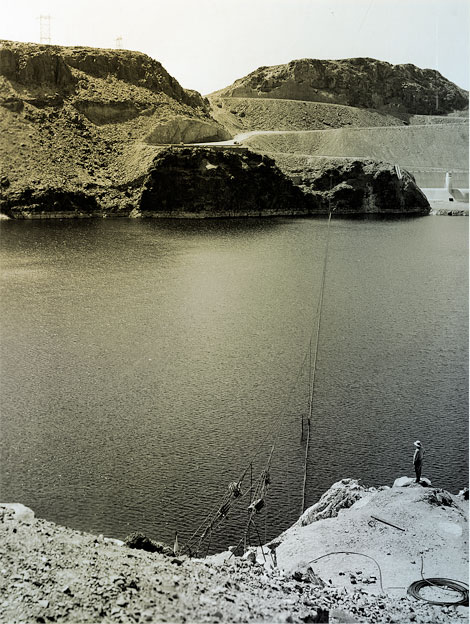 Cable across Lake Mead and security fencing, May 1940. Reclamation photo.
Cable across Lake Mead and security fencing, May 1940. Reclamation photo.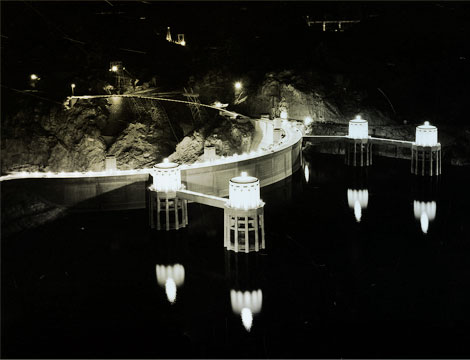 Hoover Dam with lighted intake towers, December 1940. Reclamation photo.
Hoover Dam with lighted intake towers, December 1940. Reclamation photo.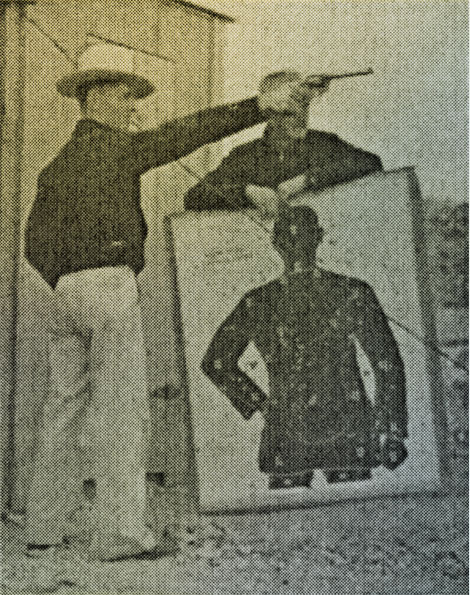 Guards on Reclamation structures improve their markmanship. Photo from Reclamation ERA, Feb.1942
Guards on Reclamation structures improve their markmanship. Photo from Reclamation ERA, Feb.1942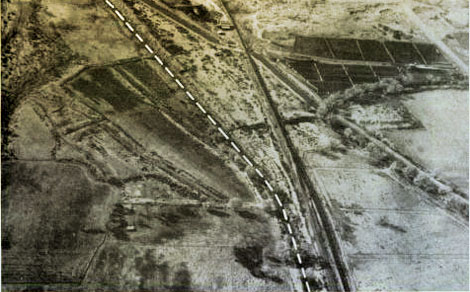 The white dotted line in this aerial photo shows remains of Hohokam hand-constructed diversion ditch for early irrigation. The square-shaped mound below modern irrigation system (upper right) marks Pueblo Grande ruins which hold many secrets of an ancient civilization.
The white dotted line in this aerial photo shows remains of Hohokam hand-constructed diversion ditch for early irrigation. The square-shaped mound below modern irrigation system (upper right) marks Pueblo Grande ruins which hold many secrets of an ancient civilization.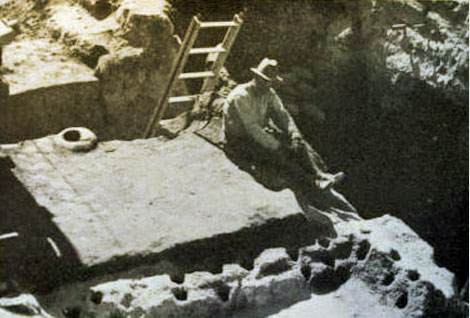 FROM POST HOLES - and other ruins of dwellingsand storage houses - archaeologists find clues to the existence of the Hohokam.
FROM POST HOLES - and other ruins of dwellingsand storage houses - archaeologists find clues to the existence of the Hohokam.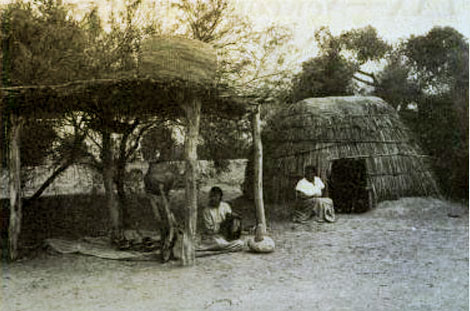 FROM PIMA INDIANS - who were using Hohokam irrigation systems when found by the Spaniards - come legends of the ancients. Photo from Reclamation ERA magazine.
FROM PIMA INDIANS - who were using Hohokam irrigation systems when found by the Spaniards - come legends of the ancients. Photo from Reclamation ERA magazine.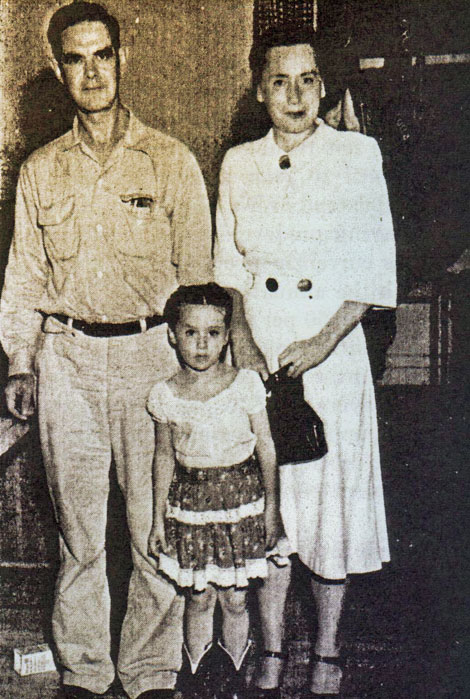 Yuma veteran Francis Henry Martin, his daughter, and Mrs. Martin were on hand to hear his name called on the 15th draw for a homestead. Photo by Samuel B. Watkins, Region III. From "The Reclamation Era", September 1948.
Yuma veteran Francis Henry Martin, his daughter, and Mrs. Martin were on hand to hear his name called on the 15th draw for a homestead. Photo by Samuel B. Watkins, Region III. From "The Reclamation Era", September 1948.
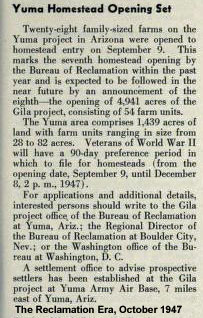
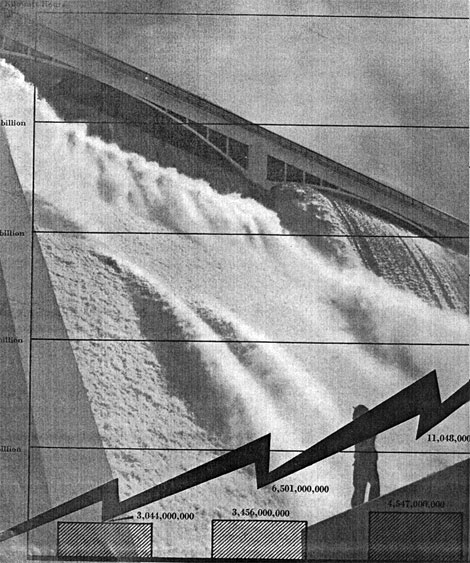 In Peace and War - Wartime record of the Bureau of Reclamation's Power Plants (Page 1)
In Peace and War - Wartime record of the Bureau of Reclamation's Power Plants (Page 1)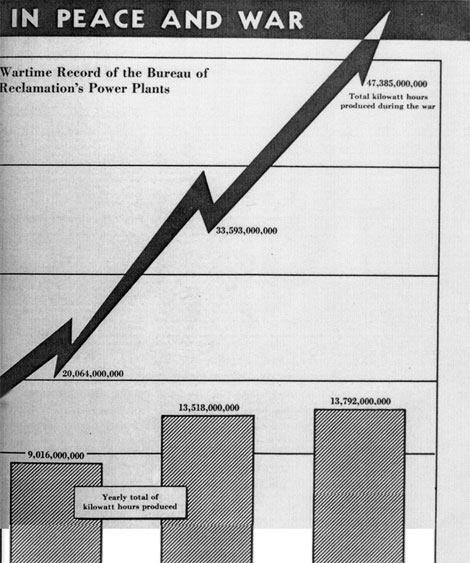 In Peace and War - Wartime record of the Bureau of Reclamation's Power Plants (Page 2)
In Peace and War - Wartime record of the Bureau of Reclamation's Power Plants (Page 2)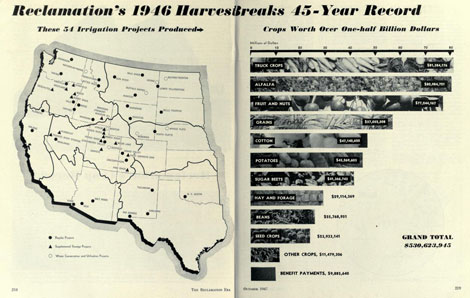 Reclamation's 1946 Harvest Breaks 45-Year Record
Reclamation's 1946 Harvest Breaks 45-Year Record Mr. Herbert Hoover, the Nation's 31st president.
Mr. Herbert Hoover, the Nation's 31st president.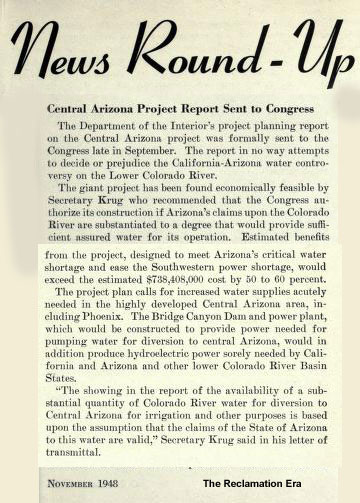
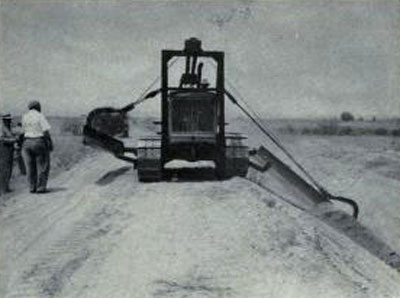 Canal Linings. Blade ditcher designed and built by project forces. An 8-foot blade is attached to the side of the crawler tractor. Photo by Harry W. Myers, Region III. Reclamation Photo.
Canal Linings. Blade ditcher designed and built by project forces. An 8-foot blade is attached to the side of the crawler tractor. Photo by Harry W. Myers, Region III. Reclamation Photo.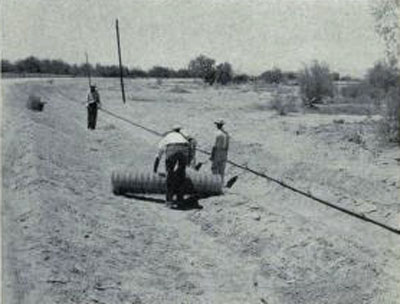 Canal Linings. Placing 2-inch header board on each side of canal. Thickening each edge of lining to 2 inches gives strength to weak points. Photo by Harry W. Myers, Region III. Reclamation Photo.
Canal Linings. Placing 2-inch header board on each side of canal. Thickening each edge of lining to 2 inches gives strength to weak points. Photo by Harry W. Myers, Region III. Reclamation Photo.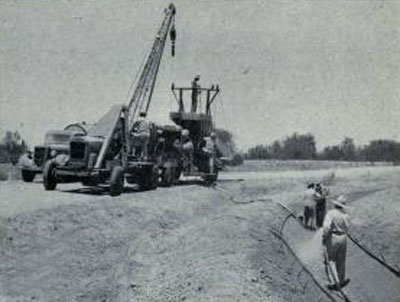 Canal Linings. Equipment, including water truck used for wetting ditch ahead of shotcrete placement. Photo by Harry W. Myers, Region III. Reclamation Photo.
Canal Linings. Equipment, including water truck used for wetting ditch ahead of shotcrete placement. Photo by Harry W. Myers, Region III. Reclamation Photo.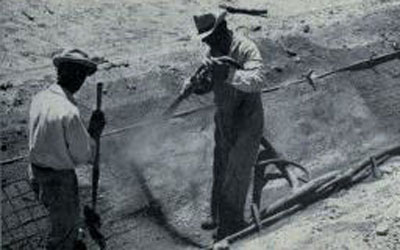 Canal Linings. Placing 1-inch shotcrete lining. Nozzleman helper has hood end of spade with which reiforcing can be raised to approximate center of lining. Photo by Harry W. Myers, Region III. Reclamation Photo.
Canal Linings. Placing 1-inch shotcrete lining. Nozzleman helper has hood end of spade with which reiforcing can be raised to approximate center of lining. Photo by Harry W. Myers, Region III. Reclamation Photo.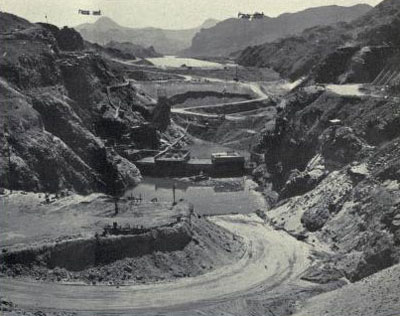 Parker Dam under construction. Average elevation of concrete, 278 feet. Looking downstream. "The Reclamation Era", December 1937.
Parker Dam under construction. Average elevation of concrete, 278 feet. Looking downstream. "The Reclamation Era", December 1937.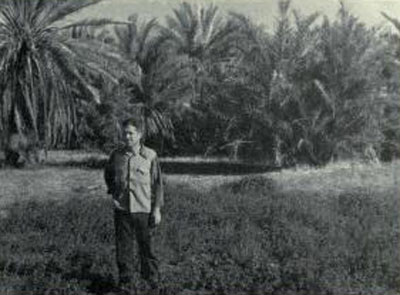 Everett Eugene Harman likes the look of alfalfa and date trees growing on his homestead. Photo by Samuel B. Watkins, Region III. Reclamation Photo.
Everett Eugene Harman likes the look of alfalfa and date trees growing on his homestead. Photo by Samuel B. Watkins, Region III. Reclamation Photo.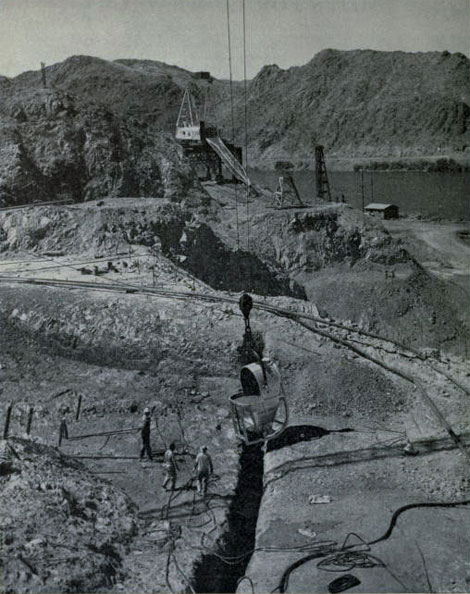 Progress at Davis Dam.
Progress at Davis Dam.Here is the first bucket of concrete being poured into the gravity wall foundation cut-off trench at Davis Dam in Ariz.-Nev. The main purpose of Davis Dam is to generate electrical energy and to reregulate the Colorado River, below Hoover Dam, through the provision of storage for irrigation and domestic use within the United States and for the delivery of water at the U.S.-Mexico international boundary. Reclamation Photo.
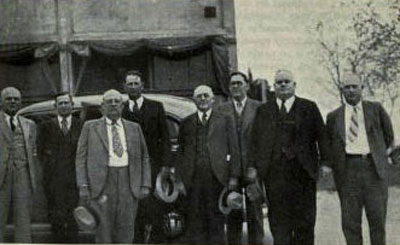 Senator Bunkhead visits the Salt River Project. Reclamation Photo.
Senator Bunkhead visits the Salt River Project. Reclamation Photo.
 View large image
View large image